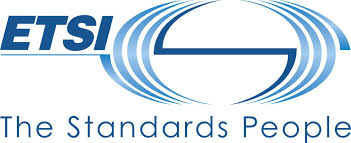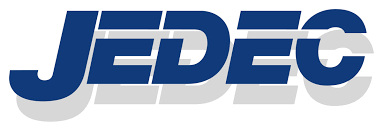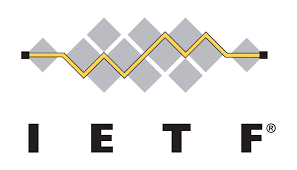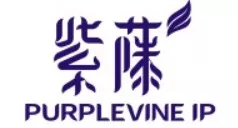- within Intellectual Property topic(s)
- with Finance and Tax Executives
- in European Union
- in European Union
- in European Union
- in European Union
- in European Union
- with readers working within the Accounting & Consultancy and Technology industries
In the process of developing technical standards, standards organizations must balance the interests of multiple stakeholders. On one hand, they must ensure that standard implementers can reasonably access and use the relevant technologies. On the other, they must protect the rights of patent holders whose inventions are essential to the standard (Standard Essential Patents, or SEPs), ensuring that these innovators receive appropriate returns. To this end, standards organizations establish intellectual property (IP) policies that define the rights and obligations of SEP holders. These policies typically require SEP owners to disclose their patents to the organization, enabling the organization to manage potential risks—such as monopolistic behavior - arising from the inclusion of SEPs.
On November 4, 2024, China's State Administration for Market Regulation (SAMR) issued the Anti-Monopoly Guidelines for Standard Essential Patents. Article 6 of the Guidelines states:
"In accordance with the regulations of standards-setting organizations, operators participating in the formulation or revision of standards must fully and promptly disclose any necessary patents they own or are aware of during any stage of the process, and provide supporting documentation. ... In specific cases, failure to disclose patent information in a timely and complete manner, or asserting rights to a patent after having explicitly waived them, may be a key factor in determining whether such conduct has exclusionary or restrictive effects on market competition."
Given that disclosure requirements vary across standards organizations, this article analyzes the IP policies of major international SDOs and interprets the meaning of "timely and sufficient" disclosure based on actual practices.
1. European Telecommunications Standards Institute (ETSI)

Figure 1 ETSI
The European Telecommunications Standards Institute (ETSI) is a core organization in the development of information and communication technology (ICT) standards, established by the European Commission. Currently, over 900 members worldwide participate in formulating ETSI standards. These standards cover key areas such as mobile communications (e.g., 5G NR/4G LTE), digital broadcasting (e.g., DVB), network security (e.g., ETSI EN 303 645), and the Internet of Vehicles (e.g., ITS-G5). According to ETSI's intellectual property policy1, members must submit SEP disclosures in a timely manner. Required information2 includes the name and contact information of the patent owner, and at a minimum:
(1) the standard number (version and clause numbers are not mandatory);
(2) the patent application or publication number.
The patent owner must also indicate whether they are willing to license under FRAND (fair, reasonable, and non-discriminatory) terms.
Relevant ETSI IPR Policy Provisions:
Clause 4: Disclosure of IPRs
4.1 Subject to Clause 4.2 below, each MEMBER shall use its reasonable endeavours, in particular during the development of a STANDARD or TECHNICAL SPECIFICATION where it participates, to inform ETSI of ESSENTIAL IPRs in a timely fashion. In particular, a MEMBER submitting a technical proposal for a STANDARD or TECHNICAL SPECIFICATION shall, on a bona fide basis, draw the attention of ETSI to any of that MEMBER's IPR which might be ESSENTIAL if that proposal is adopted.
4.3 The obligations pursuant to Clause 4.1 above are deemed to be fulfilled in respect of all existing and future members of a PATENT FAMILY if ETSI has been informed of a member of this PATENT FAMILY in a timely fashion. Information on other members of this PATENT FAMILY, if any, may be voluntarily provided.
Although the act of disclosure is primarily a declaration of the patent owner's licensing intent toward ETSI - particularly regarding FRAND commitments - the SEP data disclosed in the ETSI database is widely used by third parties to assess SEP strength. Several practical issues are worth noting: First, the patent owner needs only to disclose one patent from the same family, and the declaration extends to all family members. However, because ETSI's database is linked to Espacenet (the EPO database), only disclosed family members are recorded, and the database does not update automatically with disclosures made in other jurisdictions. This may lead to discrepancies between the actual number of patents and the data shown. As a result, some patent owners choose to re-disclose additional family members later, to ensure the database reflects the complete SEP portfolio. Second, while submission of the standard number (e.g., TS 38.XXX) is required, additional identifiers like standard name (e.g., 4G or LTE) are optional and unstandardized, leading to inconsistent data classifications across disclosures. Consequently, external evaluations based on ETSI's database may vary depending on data indicators used.
Regarding timing, ETSI requires "timely" disclosure, but this term lacks a clear definition. Although many SEP holders disclose early—some argue that disclosure must occur before the standard's "freeze date"—this is not strictly enforced. In Optis v. Apple3, Apple argued that Optis's failure to disclose before the freeze date rendered its SEP unenforceable. The UK High Court rejected this view, noting that post-freeze disclosures are common and do not invalidate the right to seek a FRAND license. Therefore, ETSI's notion of timeliness should be interpreted in light of mutual intent to grant a FRAND license.
2. Institute of Electrical and Electronics Engineers (IEEE)

Figure 2 IEEE
The Institute of Electrical and Electronics Engineers (IEEE), headquartered in the United States, is the world's largest technical professional organization. Its Standards Association (IEEE-SA) has developed numerous influential international standards across various fields, including communication networks (e.g., IEEE 802.11), power systems (e.g., IEEE 1547), artificial intelligence ethics (e.g., IEEE 7000), and semiconductor interfaces (e.g., HDMI).
Key Provisions from the IEEE Patent Policy:
Clause 6.2 Policy
...
If the patent holder or patent applicant provides an LOA, it should do so as soon as reasonably feasible in the standards development process once the PAR is approved by the IEEE SA Standards Board. This LOA should be provided prior to the Standards Board's approval of the standard.
...
The Submitter of an Accepted LOA who has committed to make available a license for one or more Essential Patent Claims agrees that it shall neither seek nor seek to enforce a Prohibitive Order based on such Essential Patent Claims(s) in a jurisdiction against an implementer who is willing to negotiate in good faith for a license. Seeking further information upon initial notice of infringement or choosing to litigate or arbitrate over any of the foregoing issues, however, does not by itself mean that a party so choosing is unwilling to negotiate in good faith.
...
According to the latest IEEE intellectual property policy4, participants in standard-setting activities - including members and technical proposal submitters - are expected to submit an LOA for SEP disclosure "as soon as reasonably feasible" during the development process (i.e., before final approval by the Standards Board). The LOA must include the patent holder's name and contact details, along with the following key information: (1) the relevant standard item number (e.g., 802.11ax); and (2) the selected licensing commitment - whether it is a royalty-free license, a license on FRAND terms, a non-assertion commitment, or a refusal to license under either of the first two terms. Specific patent numbers and descriptions are required only when the fourth option (refusal to license) is selected.
Notably, SEP disclosure to IEEE for technologies such as Wi-Fi does not require specific patent numbers in most cases. Patent holders may make a FRAND commitment that applies broadly to all their SEPs through a blanket declaration. This practice contributes to the difficulty in determining the exact number of SEPs related to a given IEEE standard. Additionally, a significant distinction in IEEE's IP policy is the restriction it places on patent owners regarding injunctive relief: a patent owner who has submitted an LOA is explicitly barred from seeking an injunction against a licensee who is willing to negotiate in good faith. The policy further clarifies that a licensee who initiates litigation or arbitration is not automatically deemed unwilling to negotiate.
3. International Telecommunication Union (ITU) / International Organization for Standardization (ISO) / International Electrotechnical Commission (IEC)

Figure 3 ITU/ISO/IEC
ITU, ISO, and IEC jointly operate as three of the world's most influential international standards organizations. The standards developed under this collaborative framework cover key technical fields, including basic communication technologies (e.g., ITU-T IMT-2020), multimedia encoding (e.g., MPEG-4 / HEVC), information security (e.g., ISO/IEC 27001), document formats (e.g., PDF / ISO 32000), and sustainable energy systems (e.g., IEC 61400).
Key Excerpts from the Joint Patent Policy of ITU / ISO / IEC5:
Clause 3 Patent disclosure
As mandated by the Patent Policy in its paragraph 1, any party participating in the work of the Organizations should, from the outset, draw their attention to any known Patent or to any known pending Patent application, either its own or that of other organizations.
In this context, the words "from the outset" imply that such information should be disclosed as early as possible during the development of the Recommendation | Deliverable. This might not be possible when the first draft text appears since at this time, the text might be still too vague or subject to subsequent major modifications. Moreover, that information should be provided in good faith and on a best effort basis, but there is no requirement for patent searches.
In addition to the above, any party not participating in Technical Bodies may draw the attention of the Organizations to any known Patent, either their own and/or of any third-party.
...
According to the joint patent policies of these three organizations6, patent holders are expected to submit IP disclosure forms "from the outset" of the standards development process - that is, as early as possible. The required information includes:
- The relevant ITU-T or ITU-R standard number (i.e., the Recommendation number); and
- The intended licensing commitment (royalty-free, FRAND, or a refusal to license under either of the first two options).
Only when opting not to license under the first two options is the patent holder required to disclose specific patent numbers and descriptions.
The disclosure requirements of ITU/ISO/IEC are similar to those of IEEE in that neither requires the disclosure of specific patent numbers when the patent owner commits to license under FRAND terms. It is worth noting, however, that the timeliness of disclosure can have serious legal consequences. In the case of Qualcomm v. Broadcom7, the U.S. Court of Appeals for the Federal Circuit found that Qualcomm had internal knowledge - confirmed through emails obtained during discovery - that certain of its patents would be essential to the H.264 standard. Despite this, Qualcomm failed to disclose the patents to the JVT (Joint Video Team), a working group under ITU, before the official release of the standard in May 2003. The court held that this constituted patent hold-up, and consequently ruled that the two Qualcomm patents were unenforceable against products implementing the H.264 standard.
3. Disclosure Policies of Other International Standards Organizations

Figure 4 JEDEC
The Solid State Technology Association (JEDEC) is a key standards organization in the global semiconductor industry, supported by more than 300 member companies. Its standards lead major technical domains such as memory and storage technologies (e.g., DDR5/LPDDR5), packaging processes (e.g., JESD30), reliability testing (e.g., JESD47), and power devices (e.g., JEP122). According to JEDEC's intellectual property policy8, patent owners are required to submit detailed disclosure information, including the relevant standard names, patent numbers, and licensing commitments (either royalty-free or under FRAND terms). JEDEC also sets a clear timeline for such disclosures: patent holders must submit this information no later than 30 calendar days after the standard has been finalized.
Key Excerpts from the JEDEC Patent Policy:
Clause 8.2.1 Terms and Definitions (cont'd)
Disclosure of Potentially Essential Patents (to Disclose Potentially Essential Patents): Disclosure to JEDEC, in writing, in the following form:
a) for issued patents, disclose the patent owner, assignee (if available at time of disclosure) name, address and intellectual property rights ("IPR") contact person; name or title of the patent; the patent number; the country or countries of issuance, and the Standard(s) on which the submitter of the disclosure believes an Essential Patent Claim may read,
b) for published applications, disclose the patent application owner, assignee (if available at time of disclosure) name, address and IPR contact person; name or title of the patent; the patent application number; the country or countries of filing, and the Standard(s) on which the submitter of the disclosure believes an Essential Patent Claim may read, and
c) for unpublished pending applications, disclose the name or title of the patent application, the patent application owner or assignee (if available at time of disclosure) name, address and the IPR contact person; the patent application number; the general subject matter of such unpublished application(s) and the Standard(s) on which the submitter of the disclosure believes an Essential Patent claim may read. Nothing herein precludes broader disclosure of unpublished patent applications on a voluntary basis or pursuant to a non-disclosure agreement.
...
Clause 8.2.3 Disclosure of Potentially Essential Patents (cont'd)
The Representative or Committee Member shall document all known Potentially Essential Patents in either: a) License Assurance/Disclosure Forms, see Annex A.3, or b) Notice of Refusal to offer Licenses on RAND Terms forms, see Annex A.4. Such disclosures or notices of known Potentially Essential Patents shall be delivered to the JEDEC Legal Department within thirty (30) calendar days of Approval by the Committee in order to be effective.
...

Figure 5 IETF
The Internet Engineering Task Force (IETF) is the primary organization responsible for developing the core protocols that support the Internet. The standards it issues - known as RFCs (Requests for Comments) - form the foundation of the Internet infrastructure. These include network transmission protocols (e.g., TCP/IP), application-layer protocols (e.g., HTTP/3, QUIC), security protocols (e.g., TLS 1.3), and audio codecs (e.g., Opus). Under the IETF's intellectual property policy9, patent holders must disclose relevant rights "as soon as reasonably possible" after a standard-related contribution is submitted or completed. If the license is not royalty-free, the patent holder is required to identify the specific patent number.
Relevant Excerpts from the IETF IPR Policy10:
Clause 5. IPR Disclosures
5.1.1. A Contributor's IPR in His or Her Contribution Any Contributor who reasonably and personally knows of IPR meeting the conditions of Section 5.6 which the Contributor believes Covers or may ultimately Cover his or her written Contribution that is intended to be used as an input into the IETF Standards Process, or which the Contributor reasonably and personally knows his or her employer or sponsor may assert against Implementing Technologies based on such written Contribution, must make a disclosure in accordance with Section 5.
...
5.2.2 The IPR disclosure required pursuant to Section 5.1.1 must be made as soon as reasonably possible after the Contribution is submitted or made unless the required disclosure is already on file.
...
4. Summary
From the practices of major international standards organizations, it is evident that the core function of the SEP disclosure system is to ensure the enforceability of FRAND licensing commitments. Whether the disclosure obligations imposed on SEP holders pertain to "timeliness" (e.g., deadlines for disclosure) or "adequacy" (e.g., disclosure formats), the overarching goal of these institutional requirements is to create predictable licensing opportunities for implementers - thereby safeguarding the stability of the standard implementation ecosystem.
Currently, the legal relationship between patent holders and standards organizations is generally regarded as contractual. On one hand, patent holders— as members of standards organizations—are bound not only by the organization's intellectual property policy but also by licensing obligations owed to third parties arising from their FRAND commitments. On the other hand, variations exist in the applicable legal frameworks of different standards organizations (for example, ETSI's policy is governed by French law, while the common policy of ITU/ISO/IEC is governed by Swiss law). As such, when interpreting specific clauses within these policies, it is essential to apply the relevant contractual interpretation principles under the applicable legal system, while also considering the particular purpose and context of standardization activities.
Given this legal diversity, the evaluation of compliance with SEP disclosure obligations should adopt a dual approach that combines both legal precision and industry practice. Only through such an integrated analysis can the substantive implementation of the FRAND principle be ensured, while also preserving the authority and credibility of the policy framework established by standards organizations.
Footnotes
1 https://www.etsi.org/images/files/IPR/etsi-ipr-policy.pdf
2 https://www.etsi.org/images/files/IPR/FAQ-IPR-Question1.pdf
3 Optis Cellular Technology LLC, Optis Wireless Technology LLC and Unwired Planet International LTD v Apple Retail UK LTD, Apple Distribution International LTD and Apple Inc.
4 https://standards.ieee.org/about/policies/bylaws/sect6-7/.
5 Guidelines for Implementation of the Common Patent Policy
6 httpsww.itu.int/dms_pub/itu-t/oth/04/04/T04040000010006PDFE.pdf.
7 Qualcomm Inc. v. Broadcom Corp., 548 F.3d 1004, 1019 (Fed. Cir. 2008).
8 https://www.jedec.org/sites/default/files/JM21W.pdf.
9 https://www.rfc-editor.org/rfc/rfc8179.html.
10 Intellectual Property Rights in IETF Technology://w
The content of this article is intended to provide a general guide to the subject matter. Specialist advice should be sought about your specific circumstances.




